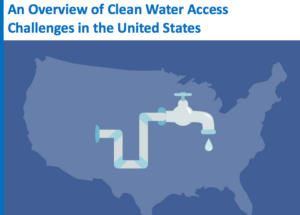In 2015, almost 200 United Nations member countries, including the United States, adopted 17 Sustainable Development Goals, a unanimous commitment to address global issues by improving quality of human life, while also protecting the planet. Sustainable Development Goal 6 serves as a commitment that participating countries ensure access and sustainable management of water and sanitation for all. While the U.N. recognizes clean safe drinking water and sanitation as basic human rights, the U.S. does not, but has committed to working toward meeting the guidelines of Sustainable Development Goal 6.
This report chronicles the numerous obstacles to safe access to drinking water and sanitation experienced by millions of America. These obstacles include inadequate or substandard plumbing, lead contamination of service lines, unsanitary wastewater disposal, contaminated source water, depleted water systems, affordability issues, and more. While most people facing these challenges are low-income and are likely to be people of color, challenges overall are on the rise and, if trends continue, will affect more communities that currently enjoy adequate access to clean drinking water and sanitation.
After summarizing existing acute challenges and future additional challenges communities everywhere are likely to face, the report goes on to recommend innovative alliances and partnerships, new and expanded finance and governance models, assistance targeting distressed households, addressing existing data gaps through necessary data collection, and strategic project investment.

